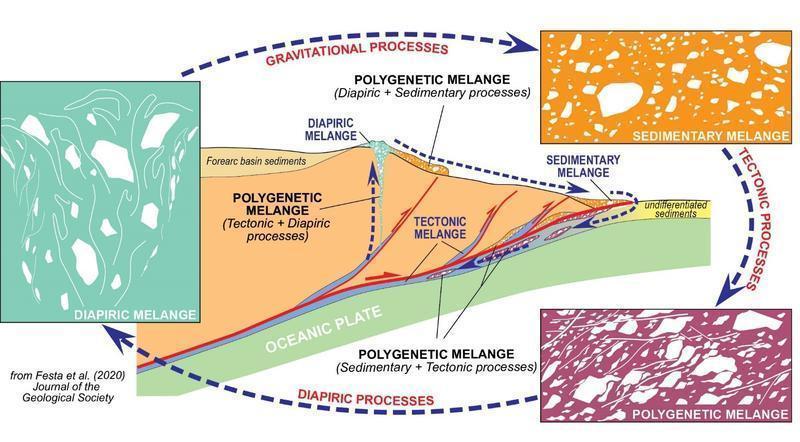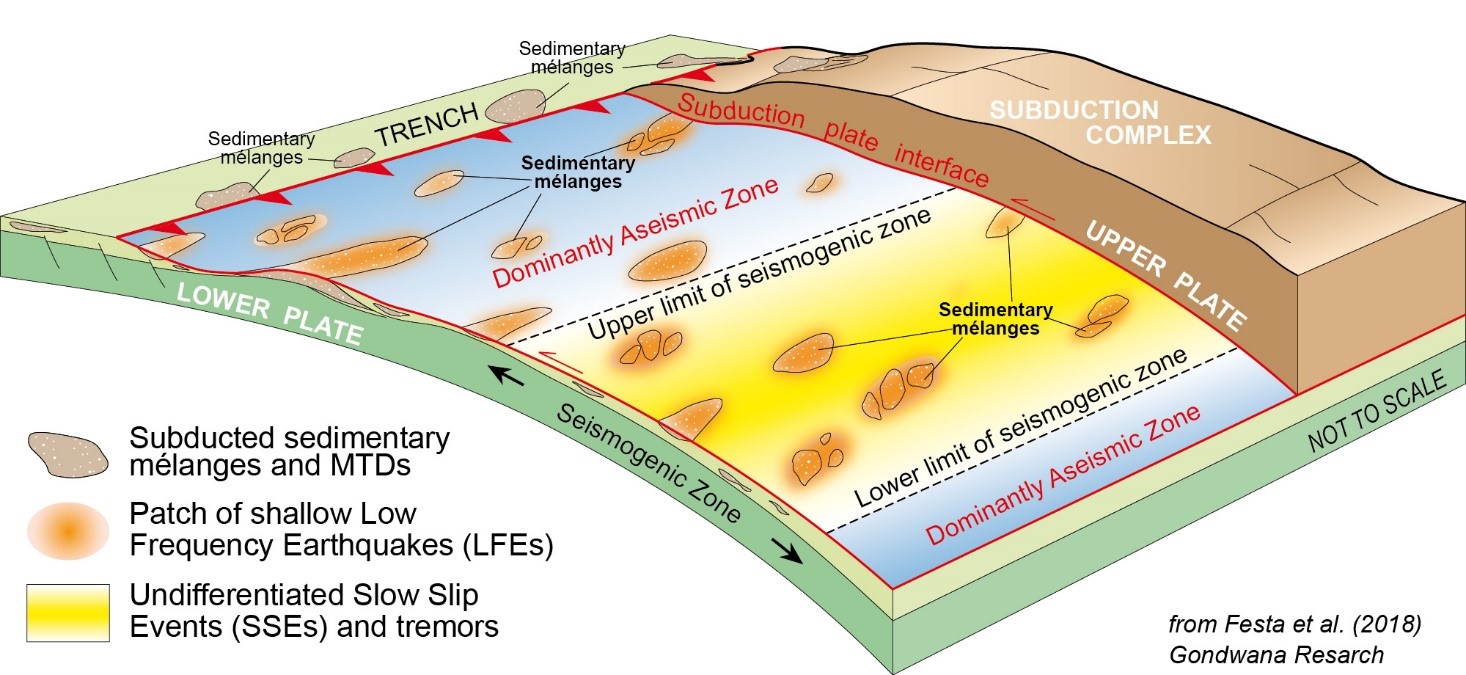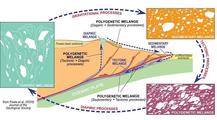Mélanges, mélange forming processes and related natural hazards
Mélange, processi di formazione dei mélange e rischi naturali associati
Staff
- Festa Andrea (Group leader)
- Balestro Gianni (Member)
Contacts

ERC Sectors
Activity
Mélanges represent chaotic rock units that are commonly involved in the general dynamics and mechanical stability of subduction complexes and orogenic wedges, participating in (or being the product of) the redistribution of earth materials through the processes of offscraping, underplating, mass-transport movements, subduction, and diapirism.
The research is addressed to define:
1. the relationships between different mélange types, and the geodynamic setting in which they formed;
2. the criteria helpful for distinguishing different types of mélange forming processes and their superposition;
3. the role of mélanges in seismogenesis, tsunami waves generation and related natural hazards.
The research is developed through the comparative analyses of different mélange types in both modern (Japan trench) and ancient (Cirum Mediterranean Region, W-Alps, Sierra Nevada and Appalachians in the USA, Precordillera Argentina, Cantabrian Region in Spain, etc.) subduction complexes.

FIG 1
Schematic view of a subduction plate interface showing probable relationships between the distribution of subducted sedimentary mélanges and MTDs, and Slow Slip Events (SSEs). Modified from Obara and Kato (2016, Science) and Festa et al. (2018, Gondwana Research).

FIG 2
Distribution of tectonic, sedimentary and polygenetic mélanges in active margins and related examples. Modified from Festa et al. (2016, Gondwana Research).
Main collaborations
Miami University, Oxford (OH-USA),
CUGB - China University of Geosciences, Beijing (China),
Charles University, Prague (Czech Republic),
Ruhr University, Bochum (Germany), IODP – International Ocean Discovery Program
Publications
- Festa, A., Pini, G.A., Ogata, K., and Dilek, Y., 2019. Diagnostic features and field-criteria in recognition of tectonic, sedimentary and diapiric mélanges in orogenic belts and exhumed subduction-accretion complexes. Gondwana Research, 74, 7-30. https://doi.org/10.1016/j.gr.2019.01.003
- Festa, A., Dilek, Y., Mittempergher, S., Ogata, K., Pini, G.A., and Remitti, F., 2018. Does subduction of mass transport deposits (MTDs) control seismic behavior of shallow-level megathrusts at convergent margins? Gondwana Research, 60, 186-193. Doi: 10.1016/j.gr.2018.05.002.
- Festa, A., Ogata, K., Pini, G.A., Dilek, Y., and Alonso, J.L., 2016. Origin and significance of olistostromes in the evolution of orogenic belts: a global synthesis. Gondwana Research, 39, 180-203, Doi: 10.1016/j.gr.2016.08.002
- Balestro, G., Festa, A., and Tartarotti, P., 2015. Tectonic significance of different block- in-matrix structures in exhumed convergent plate margins: examples from oceanic and continental HP rocks in Inner Western Alps (NW Italy). International Geology Review, v. 57, no. 5-8, 581-605. http://dx.doi.org/10.1080/00206814.2014.943307.
- Festa, A., Pini, G.A., Dilek, Y., and Codegone, G., 2010. Mélanges and mélange- forming processes: a historical overview and new concepts: In, Dilek, Y., ed., Alpine Concept in Geology: International Geology Review, v. 52, nos. 10-12, p. 1040-1105. DOI: 10.1080/00206810903557704.
Tag: Mélanges, subduction complex, natural hazard





